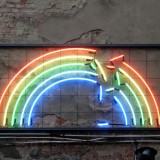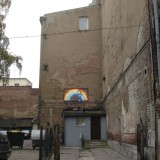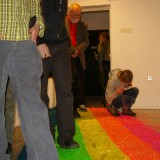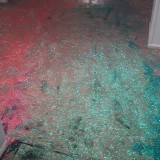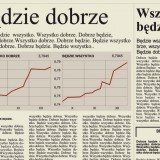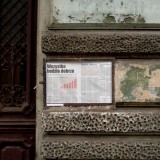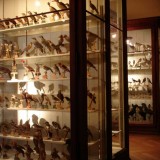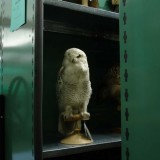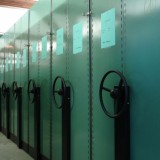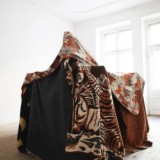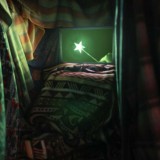Agnieszka Chojnacka
Agnieszka Chojnacka (born 1979) graduated in 2004 from the Department of Graphics and Painting in the Studio of Applied Photography (run by Grzegorz Przyborek) and in the Studio of Photography and Video Image (run by Konrad Kuzyszyn) within the Academy of Fine Arts in £ód¼. In 2006 the artist received a bursary from the Arts Council England as part of a project entitled Accession and in addition a bursary from the Strasburg Club Artist in Residence. In 2007 as part of the Adam Mickiewicz bursary award she participated in a project entitled Hertzel – Mirage, which formed a part of the Polish-Israeli Year in Tel-Aviv and in 2008 she received a Scholarship from the Ministry of Culture and National Heritage in Poland. She works in the media of photography, sound installation, video art and multimedia art.
The artist confronts spaces that do not easily go together and by this she surprises and frees the viewer from conventional ways of thinking. In her work she takes the viewers into an unreal world, secluded, calm and safe. She then layers within this context a disturbing everyday reality, often unfriendly, sometimes full of violence. The contrast of these two worlds in some works is highlighted by a text – spoken or written. In a Short history of flight a camera is led through a hallway between two rows of metal bookshelves tightly crammed with stuffed birds. The location was a display room at the Zoological Museum in Strasbourg which is videoed from the entrance to the end of the hallway, from the first section to the last. During this special trip we hear a narration about flying. It is the kind of a detailed analysis which contains not only a description of places shown and the views which change together with the change of perspective, but also especially the characteristics of emotions which accompany all phases of a flight: beginning with the initial decision to fly through the moment of raising and taking off, the feeling of freedom associated with the flight, then also the fear associated with the threat of falling till the moment of… waking up. Reality and dream are mixed but the fact that the story is told by 11 people, gives it a more universal character. There is a contrasting of the two spaces: the one which is told and the one which is shown. Open and closed, spatial and cramped, full of life and filled with dead birds unable to fly. The work provokes causes serious questions dealing with the condition of a human being, art and the place of an artist in today’s world. The artist doesn’t respond to them but forces the audience to do it.
During the exhibitions Chojnacka places signatures made of brocade on the floor, which are then spread around the gallery by the public and at the same time – destroyed. During her exhibition Elementary particles in 2007 in Gorzów Wielkopolski every member of the audience had to go through a door mat with a meaningful sign “Strange is this world”. By placing the sign at the entrance, the artist underlined the difference between the world of art and the world outside of art, and defined a common element which appears in her work: the element of surprise. The message on the mat which she related through the text ceased to be legible after some time, but the work which was spread by people moving around the exhibition took on a new meaning: the artist filled the entire space with this message by using the viewers.
The artist also confronts incompatible images by placing something unusual in real space. She allows us to look at it, revealing at the same time the desire within the audience to peer into or peep. The “mystery” may be the view of another space which is unavailable for us, just as it was in the work Gravitation, in which we could peep into the animation of a space trip, which one could see through a small eyehole. In one of the latest works entitled Cave completed as part of the Memory Project (£ód¼ – New Orleans 2013) Chojnacka built a homely version of a hut: a construction usually assembled by kids who annex their own space, excluded from the external world. It is the kingdom of a child and often, in his/her understanding, the safest place in the world, although the construction of a frame built from elements of home equipment and covered with blankets must be repaired often. Chojnacka’s Cave is a cosy place – it is built of soft, woolen blankets which are also in the interior. Inside the “cave” there is a movie projected in which one can see soap bubbles destroyed with a magic wand. Every bubble blown up is accompanied by the sound of an explosion. Again Chojnacka within the work contrasted opposite spaces and surprises the viewer with the image. Within the safe space of a cave, she forces the viewer to abandon the conventional perception of reality. She refers to experiences from childhood, the imagined world which fills the imagination of a child, but she confronts it with images of destruction.
Chojnacka’s works are not unambiguous and may be received on very many layers: from the initial reception which causes pleasure, to reflections of the changes which take place before our eyes and serious existential questions, associated with the future of humankind.
Karolina Jab³ońska


